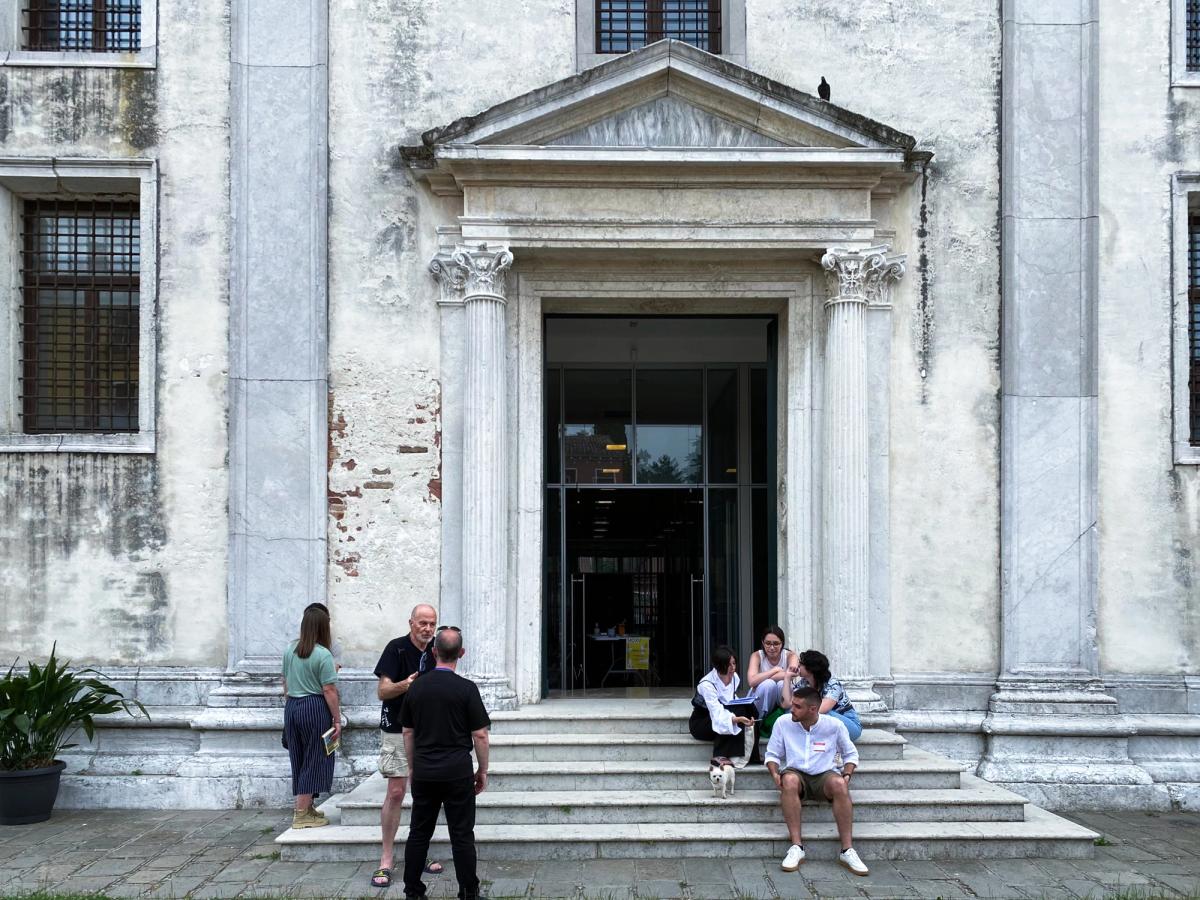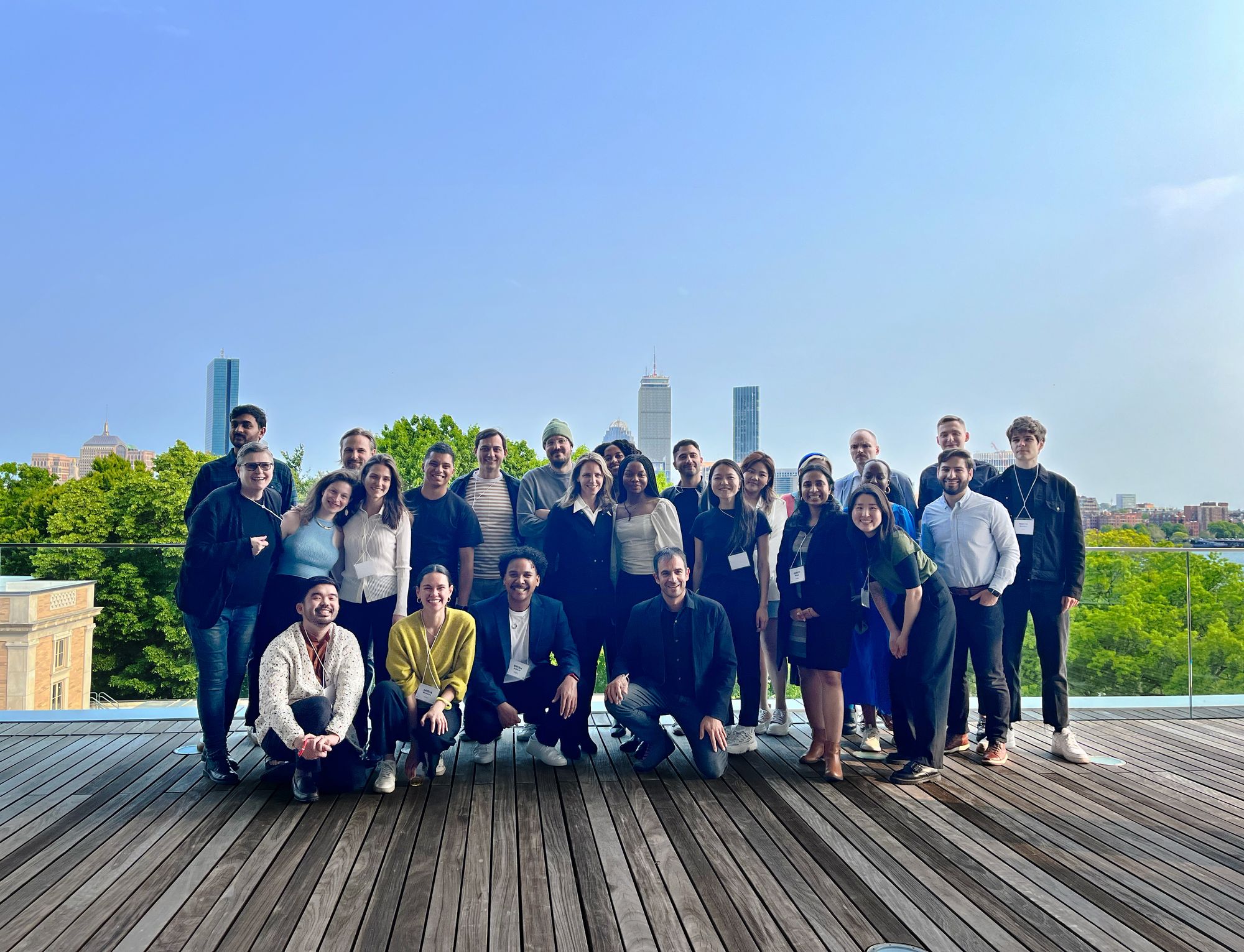MITdesignX Extends Its Reach With Seven Highly Successful International Programs
While each program is unique to the needs of its locale, the emphasis of the MITdesignX curriculum on early-stage venture development through design and iterative redesign as a problem-solving mechanism remains essential.
By Denise Brehm
Oct 30, 2023
Animal skin-like luxury fabrics made from pineapple peels; an all-electric, supercapacitor-based propulsion system for use in short-run passenger ships; and a supply chain of salt-tolerant plants grown in the Venetian Lagoon that will define a new gastronomic culture: These are among the projects of the 2023 cohort of MITdesignX Venice, or as it’s familiarly known, MDXV.

MDXV, Venice, Italy
Each of the 10 teams in the cohort selected in September receive 4,000 euros to develop a project over 10 weeks working with MITdesignX executive director Gilad Rosenzweig MCP ’13, an architect, planner and entrepreneur, and Fabio Carrera PhD ’04, a professor of urban technology and information systems at Worcester Polytechnic Institute (WPI), whose Venice-based non-profit SerenDPT hosts MDXV.
MDXV — like all the MITdesignX international programs — follows the MITdesignX accelerator curriculum. And that curriculum is very much in line with the goals of its organizational base, the MIT Morningside Academy for Design (MAD). Both MITdesignX and MAD catalyze innovation through the use of design as a problem-solving mechanism.
“You want design to be out in the world and drive innovation, which is why it makes so much sense for MITdesignX to be part of the MAD ecosystem,” says Deputy Dean of Engineering Maria Yang, who is associate director of MAD.
“Adding a horizontal skillset to the students’ vertical knowledge is where MAD and MITdesignX’s visions align,” says Professor Svafa Grönfeldt, faculty director of MITdesignX. “This enables students to create their own opportunities post-graduation, and deploy solutions into the world.”

Gilad Rosenzweig and Svafa Grönfeldt, in Mexico City.
First envisioned by Dennis Frenchman, now a professor post-tenure in the School of Architecture and Planning (SA+P), MITdesignX grew out of the desire to support MIT students in deploying their ideas for solving the world’s critical challenges, while they were still in the academic setting. Frenchman, Grönfeldt, Rosenzweig and colleagues from across MIT developed and launched MITdesignX in 2017. The program helps creative thinkers — by providing them curriculum, funding and academic credit — use design innovation to turn their ideas into viable solutions to complex problems, preparing them for careers as innovators and entrepreneurs.
In all of the MITdesignX programs, both at MIT and around the world, usually eight to 10 teams of two to six people are selected each year to “interrogate, understand and solve intractably complex environmental and societal problems such as addressing the climate crises, social justice, food security, public health and urban resilience,” Grönfeldt says. “The type of issues the teams are engaging are often characterized by extreme levels of difficulty, uncertainty and the challenge they pose to traditional problem-solving approaches.

Svafa Grönfeldt, moderating an MIT MAD event at the MIT Museum.
Photo: Alexander Laiman
The academic framework of MITdesignX consists of four phases: Understand, Solve, Envision, Deploy. The first two phases lead teams in gaining a firm grasp of the problem they are working on, acquiring data to back it up, and ensuring that their proposed solution both fits the problem and includes all the necessary specifications. After that, the focus is on the business model and organizational design. Finally, in the Deploy phase, teams develop a plan for scaling, fundraising, and communicating their venture and its goals to the world.
MITdesignX has a very long reach. In addition to its flagship venture accelerator, it presents a series of open on-campus and online events, including a selection of for-credit courses and online Professional Education courses. In all, more than 3,000 people participate annually. It also offers seven international venture design accelerators.
Since its creation, more than 80 MIT student teams have gone through the venture-design accelerator program on campus, and 23 students have interned with the 120 MITdesignX international teams. The projects that emerged from the MIT campus alone, as of 2022, had raised $110 million in venture capital and $5 million in grants, with a valuation total of more than $300 million. And these teams are resilient, with 80 percent of those launched on campus still in operation after three years. Many make headlines around the world.
One such team is Biobot Analytics, the first company in the world to commercialize data from sewage. Conceived and launched by MIT computational biology doctoral student Mariana Matus PhD ’17, and architect Newsha Ghaeli, then a research fellow at the Department of Urban Studies and Planning’s Senseable Cities Lab, the project to use sewage to track public health won a place in MITdesignX 2017. That led to the development of disease-mapping within a municipality using a robotic sewage analyzer to detect opioids or diseases, including COVID-19. Shortly after Biobot’s launch, it was selected by the U.S. Centers for Disease Control to expand the tracking of COVID-19 rates in wastewater.

Biobot Analytics co-founders Mariana Matus (L) and Newsha Ghaeli (R) in their lab in Somerville, MA.
Photo: courtesy of Biobot Analytics
MITdesignX GLOBAL INITIATIVES
MITdesignX has extended its innovative approach to entrepreneurship and design to the global scale through a series of international workshops, each tailored to address specific challenges. Run by Grönfeldt and Rosenzweig in collaboration with local organizations in Dubai, Hong Kong, Mexico, Israel and Palestine, Iceland, and Venice, the initiatives have directly engaged nearly 600 people. This number does not include the many people who have subsequently worked for or benefited from the work of the ventures launched. While each program is unique to the needs of its locale, the emphasis of the MITdesignX curriculum on early-stage venture development through design and iterative redesign as a problem-solving mechanism remains essential.
The newest program is in Dubai (MDXB). The workshop series is focused on the sustainable growth of cities in the Middle East and North Africa regions with projects in water, food and housing supply; healthcare; and carbon-emission reduction. The first cohort will begin in November. Twelve MIT students will serve as interns with the selected local startups during MIT’s Independent Activities Period (IAP), sponsored by MIT’s MISTI.
Another program began this summer in partnership with the MIT Hong Kong Innovation Node and MISTI. Ten MIT graduate students and 2022 MAD Fellow Surbhi Agrawal MCP ’23, as teaching assistant, went to Hong Kong to work with 40 local university students on a set of challenges related to the operations and sustainability of the Mass Transit Railway public transport network.
In a joint project with the MIT Leventhal Center for Advanced Urbanism, MITdesignX Mexico City (CDMX) is addressing that country’s needs for transitioning from fossil fuels to renewable energy sources, with funding provided by Mota-Engil Mexico. “We ran an Ideathon in May, open to the public, with over 200 participants, generating 1,000 ideas and 30 proposals,” Rosenzweig says. Afterwards, CDMX had a call for proposals for a venture accelerator workshop series in July and August. The 12 early-stage startups selected to participate in the program had the goal of developing “viable ventures that can scale,” he adds. The teams pitched their ideas Aug. 21 to local investors, industry, and government officials.
MITdesignX also works with Our Generation Speaks, a Boston-based incubator associated with Brandeis University that connects Palestinian and Israeli entrepreneurs (Fellows) to help them create startups. The Fellows come to Boston for three months to live, study and work together. MITdesignX provides workshops for a subset of the Fellows working on problems related to design and the built environment. (The MIT Game Lab works with another subset.) During IAP, MISTI sends MIT students to the Middle East to work with the ventures developed by the Fellows during their stay in Boston. Rosenzweig provides ongoing mentoring and support for the Fellows, and helps with recruitment.
In Reykjavik, Grönfeldt works with two universities. At the University of Iceland, MITdesignX runs an annual social innovation workshop series called Startup Social, in collaboration with the University of Iceland, the Iceland University of the Arts, and Reykjavik University. Grönfeldt is former president of the latter. At Reykjavik University, Executive MBA students can choose to go through the MITdesignX curriculum and, as their capstone project, analyze existing startups and provide recommendations for improvement. Their final presentations are held at MIT at the end of an MITdesignX bootcamp week.
MDXV: REINVENTING VENICE
In Venice, Carrera’s SerenDPT hosts MDXVin the company’s H3 Factory, a church built in the 1500s that also provides office and workspace for MDXV teams and startups.
For instance, Rehub, a startup from MDXV 2022, takes glass waste from Murano, turns it into a paste that can be extruded using a 3D printer or injected inside molds to create new 100 percent Murano glass objects, while reducing energy consumption and the environmental impact of the glass industry. Rehub founder and CEO Matteo Silverio says, “MDXV was an amazing chance to better refine our initial business idea. The informal environment and the great team, including SerenDPT, boosted our growth and made our business model more concrete.”
As MITdesignX expands the reach of its framework internationally, it empowers a new generation of innovators to understand, solve, envision and deploy successful ventures that have significant impact both locally and globally.
Links
Related News
Related Events

MITdesignX Pitch and Demo Day 2023

